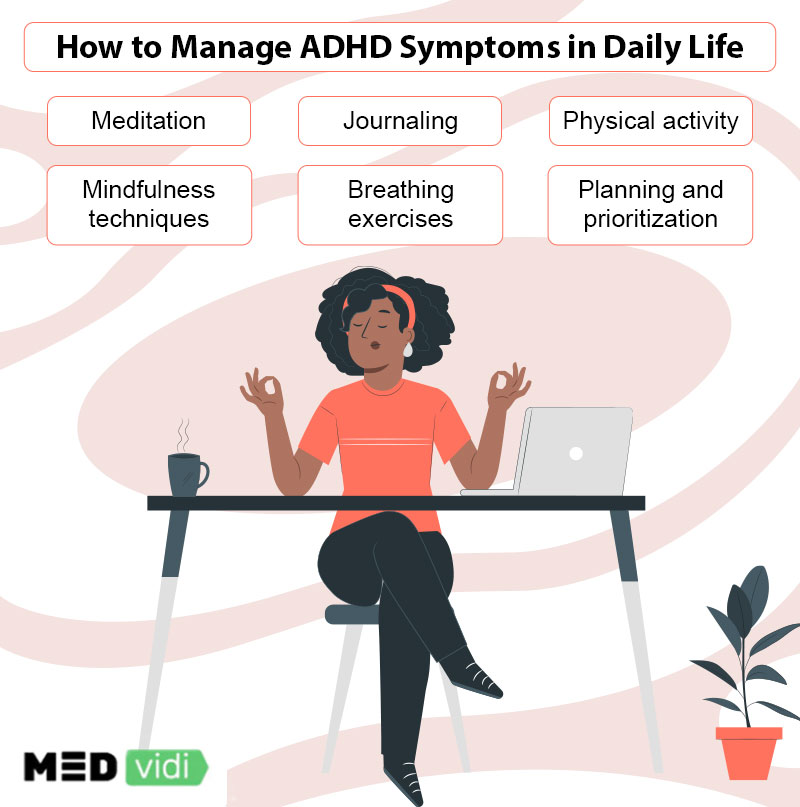People with ADHD often struggle with racing thoughts and unstable emotions, and these symptoms never seem to end. While the numerous thoughts might link ADHD with creativity, they also frequently cause stress and anxiety that compound the issues. In addition, the rollercoaster of emotions leads to feeling out of control, impulsivity, and frustration. Dealing with such instability is physically and emotionally draining, even chipping away at one’s self-worth.
But you don’t have to endure the ADHD motions forever. Different treatment options are available for people with ADHD, from several types of medication to psychotherapy. In this article, we will review the most common calming techniques you can use to control ADHD symptoms like agitation, restlessness, and impatience.
Deep Breathing
Deep breathing exercises help to clear the mind and calm the body when practiced regularly. Unlike normal breathing, which occurs subconsciously, deep breathing as a calming strategy requires focus and concentration.
You will have to pause other activities when taking these exercises. Take a deep breath and hold it for around four seconds, then slowly breathe out through the nose. To find the rhythm of deep breathing relaxation exercises, you can imagine that:
- your breaths are like sea waves, ebbing and flowing;
- you are breathing in a healing light that overflows past your lungs into the body;
- you are breathing in the scent of fresh roses and breathing out slowly as though blowing a candle.
Focusing on breathing patterns helps to shift your train of thought and interrupt
Meditation
Meditation is
- Grounding. Due to the wandering ADHD thoughts, you might find it challenging to focus on something when beginning meditation. In such cases, try to establish a connection with your physical environment by walking barefoot to take in the ground sensations or soaking your feet in the water.
- Thought observation. ADHD makes it difficult to focus, and it is easy for your mind to rocket from place to place. Thought observation enhances your awareness that such instability is inevitable and indicates you’re learning to master the practice.
Meditation provides a window for relieving stress and tension by switching your focus from external stressors to your innermost emotions and thoughts. It helps to calm the mind and find inner peace. Create some time, either before beginning the day or late in the evening, to meditate, rejuvenating your spirit.
Keeping Boundaries
At the beginning of the day, you have so much energy and time to get things done. But without prioritization, you might end up exhausted, having achieved very little at the close of the day. As a relaxation strategy for ADHD, keeping boundaries requires you to prioritize particular relationships or activities over others. Check out the most demanding tasks and find ways to cut them back. For instance, limit yourself by answering work emails or calls within office hours only. Maintaining boundaries grants you more time to rest and relax, reducing ADHD-associated stress or anxiety.

Journaling
Expressing thoughts through writing or drawing is a potential calming activity for people with ADHD. As you put the thoughts on paper, you let out even the things you might be holding back and unload some stress from your body. Thus, journaling is critical in letting the mind and body relax, especially on the most stressful days. Whether it was a bad day at the office or nasty encounters in traffic, writing down or doodling your thoughts and emotions can help you release the tension.
Exercise
Conclusion
ADHD is usually associated with a rollercoaster of emotions and endless thoughts. It can make one struggle with procrastination, frustration, anger, and anxiety. People with ADHD often find it difficult to maintain relationships or meet deadlines at work, leading to stress. But calming activities for ADHD, such as breathing exercises, mindfulness, and keeping boundaries, can help lead a more fulfilling everyday life.
Note that the above-mentioned activities for ADHD adults are not a replacement for medical treatment. Seeking proper diagnosis and treatment, as well as joining a support group or online forum for people with ADHD, can help reduce the pressure and manage your symptoms better.













